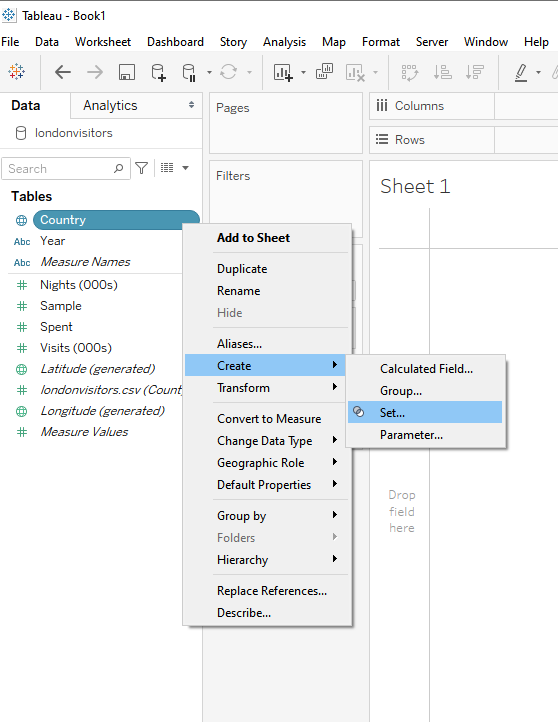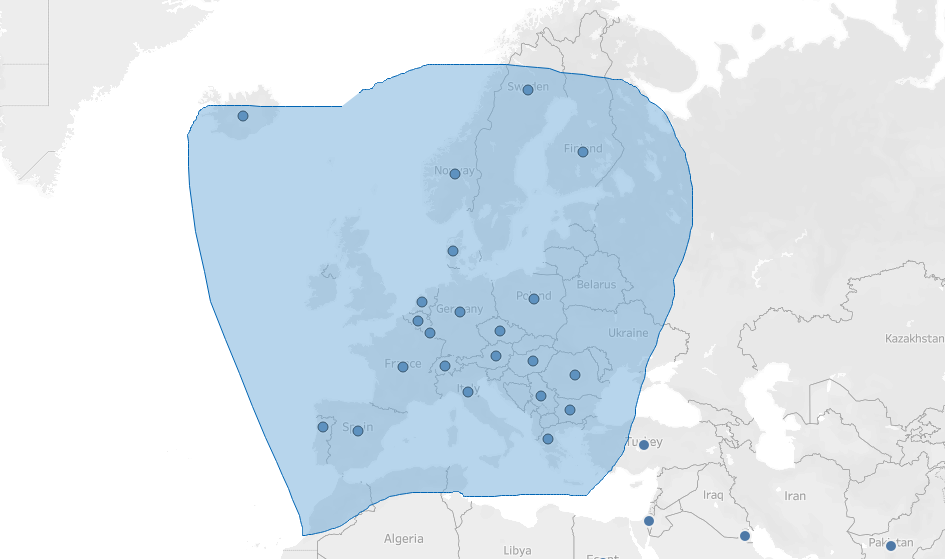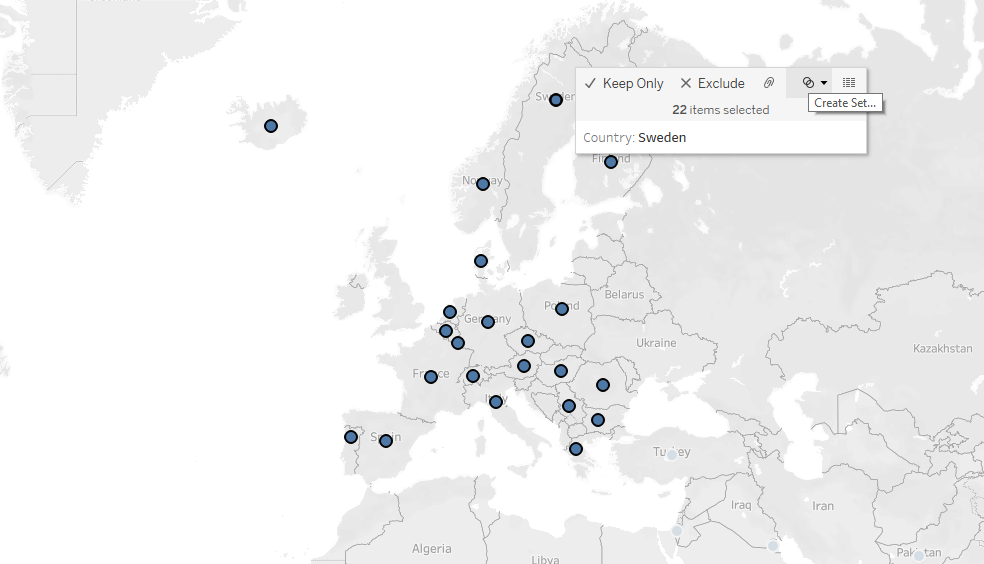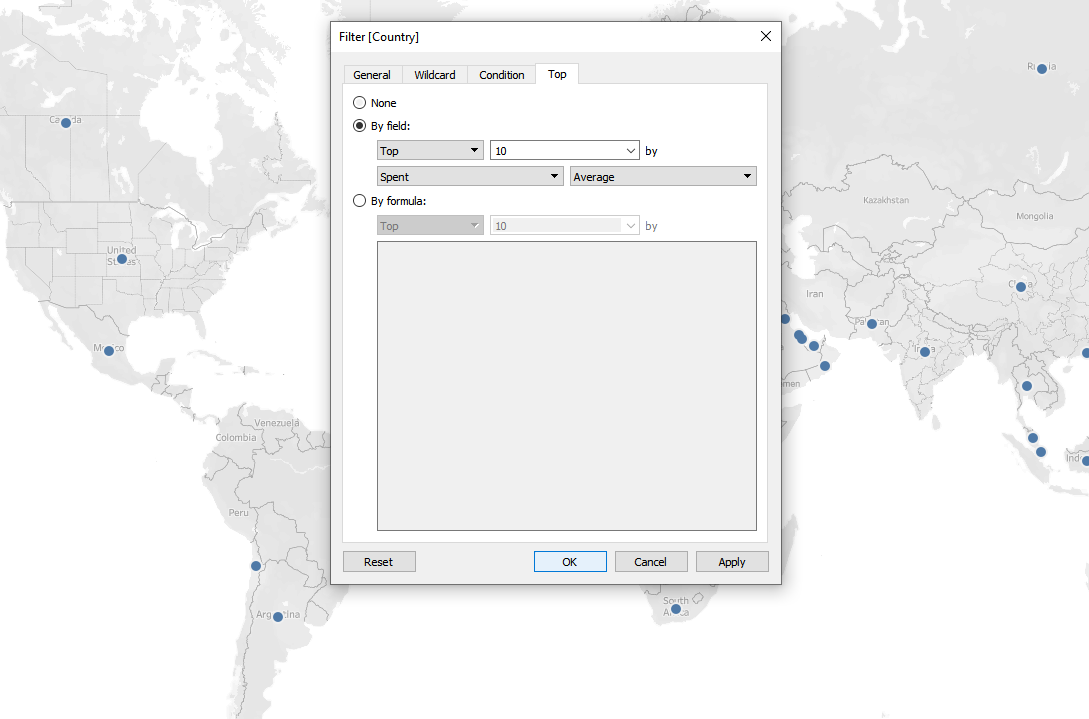Sets are custom fields created from existing dimensions in our data source. We can use them to analyse a subset of data.
There are 3 types of sets:
1. FIXED sets. Fixed sets do not change the underlying data. Fixed sets can be based on single or multiple dimensions .
2. DYNAMIC sets. These change with the underlying data. A set must be dynamic if the data is to be updated.
3. COMBINED sets. Through these we can compare members in 2 sets.
Creating a fixed set.
We can create sets either manually by selecting the teeny triangle that becomes visible when we hover over a dimension in the data pane, and selecting the entries we want in our set.

Or ..
In this case, as we want to create a set of the European countries (from which London tourists are from), a better way is to lasso the countries in Europe:

And then select the Venn diagram symbol in the tooltip.

The problem with this fixed set is that, if our dataset updates in 2021 to include visitors from Croatia, which is in Europe, it won't be included in our set so we have to manually go back and add it.
Creating a dynamic set
To create a dynamic set we can either drag our selected dimension (in this case country) to filters and select our criteria or conditions, then create a set from the filter.
Or, as before, we can create a set directly from our dimension.
I chose to create a set containing the top ten countries from which tourists have spent the most in London.

If the data gets updated, and maybe visitors from New Zealand end up spending a bunch more in 2021, enough to push them into the top 10, our set will be updated accordingly.
Aren't sets basically the same as groups?
It may initially seem like that but, no, not really.
Groups are static and more simplistic, they can only be based on ONE dimension. Grouped dimensions can have multiple groups within them.
Sets can be dynamic as well as static. Can group across multiple dimensions and set conditions. The result of a set is binary; the values are either IN or OUT.
"A set is like an exclusive night club - you're either in or out" - Heide Kalbe
Also, sets are processed before dimension filters where as groups are processed AS dimension filters.
